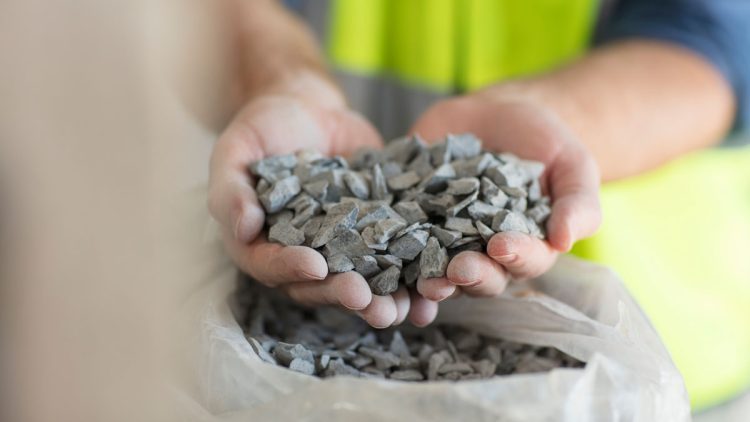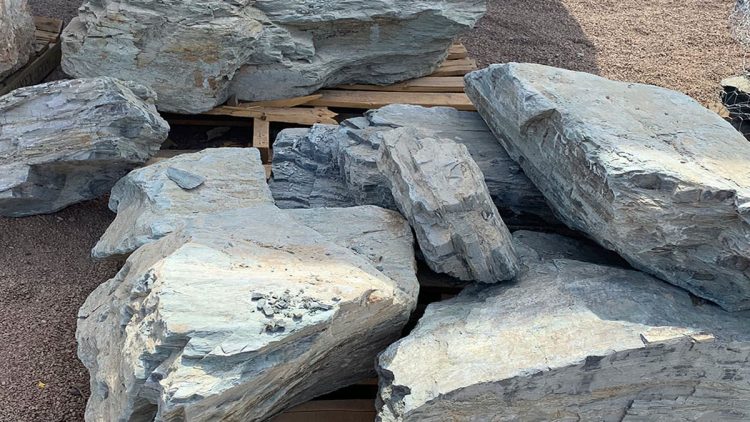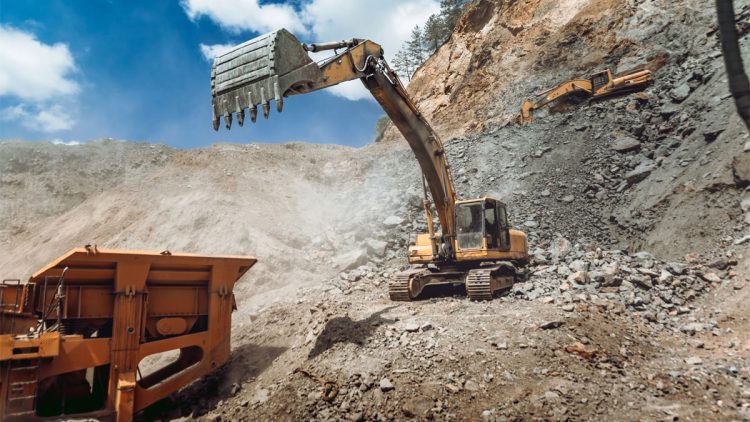An important part of the aggregate industry, boulders are used in many different industries, including landscaping, construction, and environmental management. This article goes into great detail about boulders, including their definition, applications, and typical cost.
The word “boulders,” as used in the aggregate glossary, refers to more than just big rocks. It is a material that can be used in a variety of industries due to its wide range of sizes, types, and applications. We will go into more detail about these elements in the sections that follow.
What Boulders Are
In the aggregate industry, a “boulder” is a large rock that is usually too big for one person to move and has a diameter of more than 10 inches. Boulders can be made of many different kinds of rock, such as sandstone, granite, and limestone. Because of their durability and size, they are frequently utilized in landscaping and construction projects.
Boulders are classified according to their size, shape, and the kind of rock they are made of. Boulders can range in size from tiny (10–12 inches in diameter) to enormous (>60 inches in diameter). The boulder’s shape can range from round to angular, and its color and texture can be affected by the type of rock.
Boulder Types
Boulders come in a variety of forms, each with special qualities that make them appropriate for particular applications. For example, granite boulders are perfect for outdoor applications due to their durability and resistance to weathering. In contrast, limestone boulders are softer and more manageable, which makes them ideal for sculpting and carving.
Boulders of sandstone are prized for their diverse array of hues and textures. They are frequently utilized in building and landscaping projects. River boulders are a common choice for garden landscapes and water features because of their smooth, rounded appearance, which is the result of years of water erosion.
Boulder Formation
Over thousands or even millions of years, a variety of geological processes create boulders. Boulder formation is significantly influenced by weathering and erosion. Boulders are created when these processes fragment larger rock formations into smaller ones.
Boulders can also form as a result of volcanic activity. Large pieces of rock and lava may be ejected during a volcanic eruption, and these solidify into boulders as they cool. Boulder formation is also significantly influenced by glacial activity. Boulders are created when big rocks are carried and deposited by moving glaciers.
Boulder Uses
Boulders are used in many different industries. They are frequently utilized as a foundational material in construction for bridges, buildings, and other structures. They can also be used as a decorative element in landscaping, to build retaining walls, and to control erosion.
Boulders are utilized in the field of environmental management to make rip rap, a kind of rock armor that prevents erosion of streambeds, shorelines, bridge abutments, and other structures. Additionally, boulders are utilized to build artificial reefs, which serve as habitats for marine life and aid in the restoration of degraded ecosystems.
Uses in Construction
Boulders are an essential material in construction. Because of their strength and longevity, they are utilized in the construction of building and bridge foundations. Additionally, boulders can be used to build retaining walls, which stabilize sloped areas and stop soil erosion.
Road construction is another application for boulders. They can serve as a sub-base material, giving the road surface a solid base. They can also be used to build embankments or barriers along roadsides, which will keep erosion at bay and provide safety.
Uses of Landscaping
Boulders are a common landscaping material because of their visual appeal and adaptability. They can be used to make water features, rock gardens, and other ornamental elements that look natural. Additionally, boulders can be used to establish boundaries or to give a landscape design height and structure.
Boulders have functional uses in landscaping in addition to aesthetic ones. They can be applied to enhance drainage, reduce erosion, and create wildlife habitat. In a garden, boulders can also be used as stepping stones or to create seating areas.
Boulders’ Average Cost
Boulder prices can vary greatly depending on several factors. These consist of the boulder’s dimensions, the kind of rock it is composed of, and its actual origin. Boulders can cost anywhere from $100 to $600 per ton on average.
It’s crucial to remember that transportation costs may also have an impact on boulder prices. Because of their size and weight, larger boulders can be more costly to transport. Consequently, purchasing boulders locally is frequently a more economical choice.
Cost-Related Factors
One of the main elements affecting the boulder’s price is its size. Larger boulders can be more expensive to remove and move because they require more resources. The boulder’s price may also vary depending on the kind of rock it is made of. For example, because of their durability and resistance to weathering, granite boulders are frequently more expensive than those made of limestone or sandstone.
The cost of the boulder can also be greatly impacted by where it comes from. Due to the higher cost of extraction and transportation, boulders sourced from isolated areas or places with restricted access may be more costly. Furthermore, the demand for particular boulder types may have an impact on their price.
Money-Saving Advice
Boulders can be made less expensive in a number of ways. Getting boulders locally is one of the best strategies. This can help local businesses and drastically lower transportation costs. Costs can also be decreased by selecting boulders that are smaller or composed of less costly rock types.
Carefully planning your project is another way to save money. You can prevent overspending and financial waste by precisely estimating the quantity of boulders required. The long-term upkeep expenses related to boulder use should also be taken into account. Boulders used to control erosion, for example, might eventually need to be replaced, raising the project’s overall cost.
In summary, boulders are essential to the aggregate industry because they can be used in a wide range of applications. Planning projects that use these adaptable materials can be made easier with an understanding of their definition, applications, and cost-influencing factors.
Boulders provide a long-lasting and visually appealing solution that can be used for a variety of purposes, including landscaping, construction, and environmental management. They are therefore still a useful resource in many different industries.
Landscaping Materials Scottsdale, Arizona
A & A Materials, Inc., located in Scottsdale, Arizona, offers, all purpose sand, aggregates, river rock, rip rap rock, mulch and wood chips for your landscaping or gardening needs. Contact us or call us at 480-990-0557 for more information.



